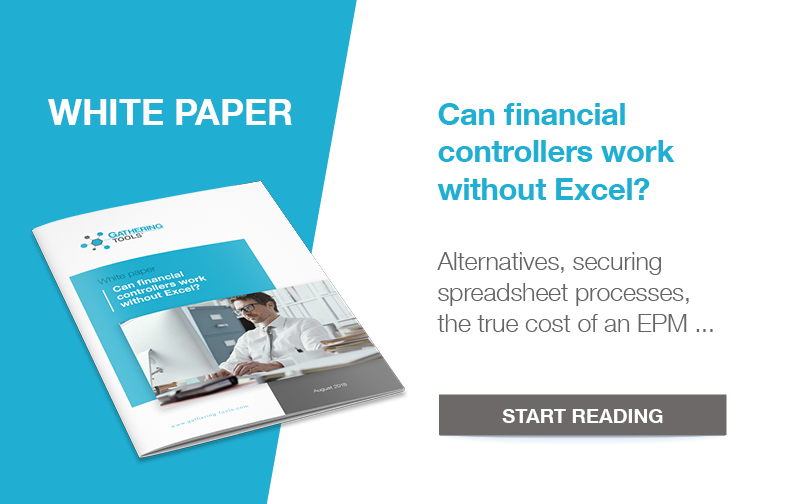In large groups, financial departments rely on EPM-type solutions to drive the company’s performance. They were able to accelerate the deployment of new methods of budget management (rolling forecast, zero-based budgeting, …), reduce the production time of reports, forecasts / re-forecasts … The management controllers have gained in efficiency and can focus more on performance analysis. But Excel, so far, has not disappeared from their daily lives …
Excel, a must in a collecting process
Large companies use their EPMs to (among other things) measure discrepancies between budget forecasts and the actual budget. To achieve this, the management controllers need to send data from the field to the EPM at regular intervals.
For a variety of reasons, those who produce the budget data in the field – those who incur expenses, or provide for commercial revenues – do not have direct access to the EPM to capture this information. In some cases, the EPM is only available at headquarters. And when it is more widely, not to multiply the costs of licenses, its use is limited to the management controllers of subsidiaries and departments.
The management controllers, therefore, turn to what they know best to collect the budget data from those who produce like Excel tables to fill. And even though plug-ins and the ability to describe workflows make it easier to integrate this information into the EPM, the reconstruction of this data is partly based on Excel.
Restitution, analysis, reporting
At the other end of the chain, the EPM tools provide powerful analysis, reporting, budgeting and simulation functions … Thus equipped, the management controllers settle – more or less easily – in a role of performance management. Today they are expected on more and more sophisticated analysis, with, for example, studies by product, by client integrating all the existing data.
In many cases, the EPM only focuses on already consolidated and aggregated data. To go down to the detailed levels of granularity and perform these ad-hoc analyses, the management controller will extract information from the EPM and reformat them, rework them, check their coherence (and possibly re-cross them with data from other sources) as needed. For these detailed studies, Excel remains here again tool n ° 1.
Part of the process remain to be secured
An EPM makes it possible to protect budgetary data and to have a stable repository to control the performance of an organisation. But, as we have seen, it is a bit unrealistic to consider a centralised collect of workflows capable of tracking each expense incurred, each hour charged to a project, each projected income.
Part of the collection process, therefore, remains in Excel, before the data is transferred to the EPM. The risks inherent in the use of spreadsheets are known – missing data, inconsistent data, currency errors, input errors, version management …
It may, therefore, be relevant to secure this part of the process, with the Gathering Tools solution, which will structure the workflow and track the data to the most detailed level, based on the existing. Because for the management controllers to be effective, they must have absolute confidence in the data that reaches them. It is, therefore, the entire budget process that must be made more reliable.





Pingback: Entreprise agile, contrôle de gestion… agile ?